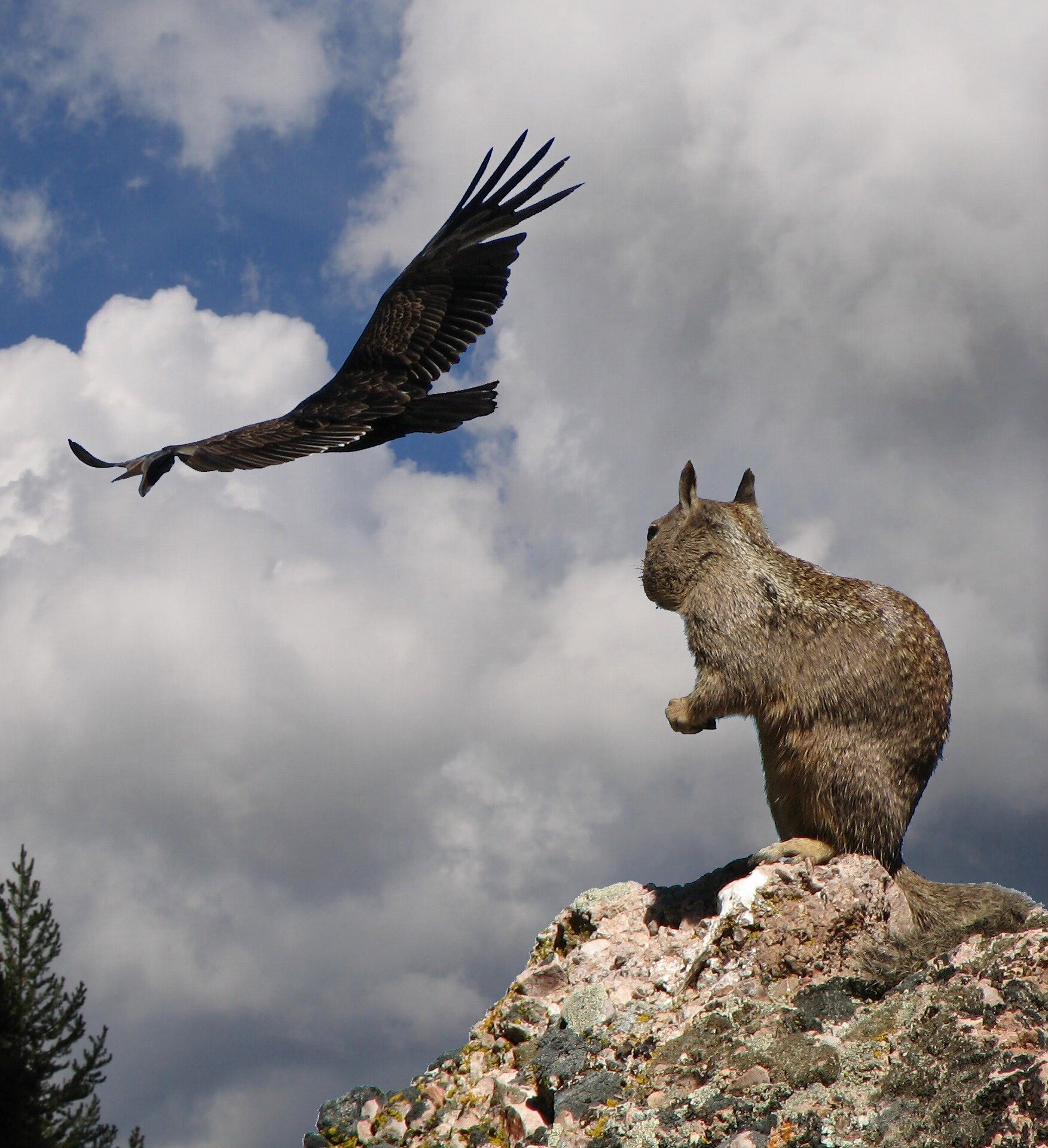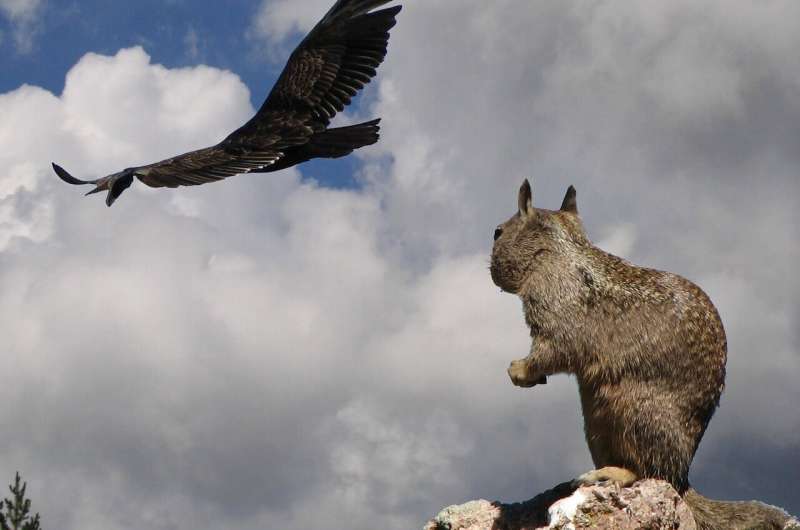

Zion National Park is home to a California condor, an endangered bird with a wingspan of more than 9 feet, that soars the same skies she shared with her brother before he died.
Both sibling birds had fallen victim to lead poisoning. But while the sister, known as 1111, survived her ordeal, the brother, known as “1K,” did not, according to a joint statement by federal officials and wildlife advocates last month.
Condor’s death ‘premature and preventable’
Now those who want to see the condor thrive are reminding the public of the dangers that lead-based ammunition—used by hunters to kill animals—can pose to the giant birds, who feed on animal carcasses.
“1K’s death is a tragedy because it was premature and preventable,” said Shawn Farry, California Condor Program Manager for the Peregrine Fund. “He had a wonderful way of endearing staff and visitors to the condor and its story, and for that, he will be missed by so many who were lucky to catch a glimpse of 1K soaring through Zion Canyon.”
1K was the first-ever condor to successfully fledge, or develop wing feathers large enough for flight, at Zion National Park, according to the Peregrine Fund, a raptor conservation organization.
He was also the 1,000th condor to hatch as part of the California Condor Recovery Program, an effort led by the U.S. Fish and Wildlife Service to revive the species.
A joint statement by the Peregrine Fund, U.S. Fish and Wildlife Service and Zion National Park called 1K’s hatching “a pivotal moment” for the program.
‘Particularly vulnerable’ to lead poisoning
But when a radio tag that biologists used to track 1K stopped moving, the scientists were “devastated to find him dead,” the fund’s statement said. “Necropsy results confirmed what the team had suspected as the cause of death: lead poisoning. 1K died just short of his fifth birthday.”
According to the Peregrine Fund, California Condors are “particularly vulnerable” to lead poisoning because, as scavengers, they feed on animal remains. If an animal is shot with a lead bullet, scavengers who feed from the carcass may consume lead.
1K’s sister 1111, who was the second wild-fledged condor in Zion National Park, was trapped and tested in January 2024, the fund said.
The team found high levels of lead present and 1111 was transferred to Liberty Wildlife, a wildlife rehabilitation center in Phoenix, Arizona, for treatment.
“When a lead-based bullet hits an animal, it often fragments into hundreds to thousands of small, little pieces of lead,” said Tim Hauck, Peregrine Fund’s California Condor Program Director.
Those fragments of lead then get eaten by condors, Hauck said.
When condors eat, they store food in storage areas in their body called crops, Hauck explained. Hauck continued, saying that their crops allow condors to keep food over a long period of time because they never know when their next meal is.
“That allows those little lead fragments to slowly break down in those really strong stomach acids, and then it gets absorbed into the blood, and it gets absorbed into tissue,” Hauck explained.
The Peregrine Fund said 1111 was released back into the wild on May 17. Her brother 1K had died during her absence, with field tracking efforts locating his body in early March.
Hauck warned that the California condor is an indicator species.
“They’re called obligate scavengers, because that’s all they do, is eat things that are dead. And so they play this vital function of cleaning up the environment and helping to stop the spread of disease,” Hauck said.
Without scavengers like condors, Hauck said, diseases like rabies could run rampant in wildlife populations.
Protection efforts underway
Efforts to protect wildlife against lead poisoning are advocated for by organizations like the North American Non-lead Partnership and the Hunters Helping Condors Program.
The Hunters Helping Condors Program, launched in Utah in 2011, offers prizes to hunters who use non-lead ammunition.
The Utah Division of Wildlife issues coupons to hunters prior to each hunting season to get free or heavily discounted non-lead ammunition.
“There is credible and substantial scientific evidence showing that lead ammunition can cause unintended impacts on our wildlife resources,” the North American Non-lead Partnership’s site reads.
“Lead is the leading cause of diagnosed death for California condors, and about 50% (die from lead poisoning), both in California and the Southwest,” Hauck said.
“We have to focus our efforts on the preventable causes of death to ensure inevitable, unforeseen causes won’t be the breaking point for the population,” Hauck said in a statement.
“The truth is lead poisoning is the number one cause of death for condors and a preventable one at that,” Hauck urged.
2024 Las Vegas Review-Journal. Distributed by Tribune Content Agency, LLC.
Citation:
One of the last California condors in Zion National Park dies from lead poisoning (2024, September 2)
retrieved 2 September 2024
from https://phys.org/news/2024-09-california-condors-zion-national-dies.html
This document is subject to copyright. Apart from any fair dealing for the purpose of private study or research, no
part may be reproduced without the written permission. The content is provided for information purposes only.